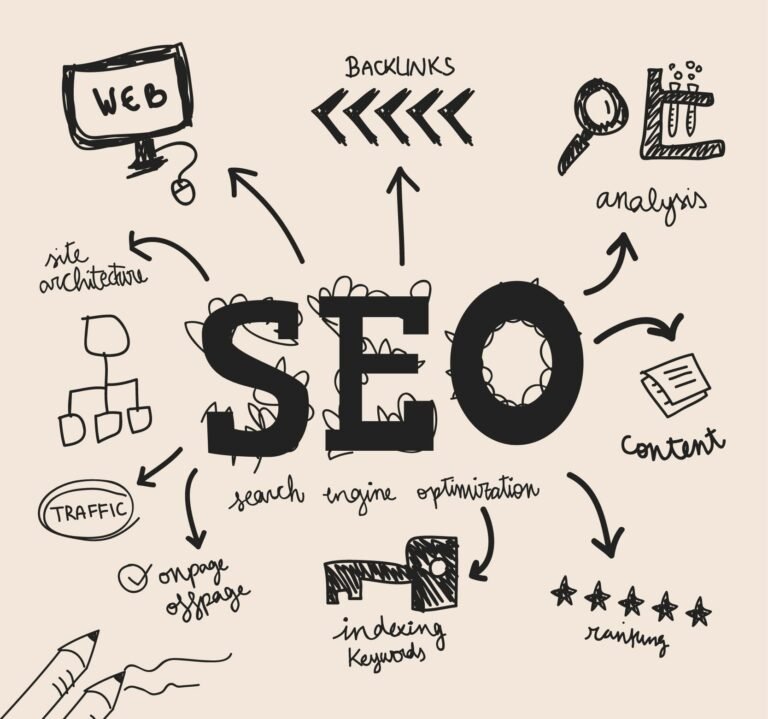When you think about your online presence, you might consider Search Engine Optimisation (SEO) and web design as separate entities. SEO is about getting found, and web design is about looking good. While this distinction seems logical, it’s a misconception that can significantly hinder your Australian business growth. In reality, SEO and Web Design are not just linked; they are two sides of the same coin, inextricably intertwined for online success.
For your Australian business to thrive online, attracting visitors through SEO is only half the battle. Once they arrive, your web design must be compelling enough to keep them there, engage them, and convert them into customers. Let’s delve into this critical synergy.
The Symbiotic Relationship: Why You Can’t Have One Without the Other
Imagine having a beautifully designed shopfront on a deserted street. No one sees it. That’s a fantastic web design with no SEO. Conversely, picture a bustling market stall hidden behind a curtain. People know it’s there but can’t easily find it or see what it offers. That’s strong SEO leading to a poorly designed, inaccessible website.
For optimal Australian business growth, your SEO and Web Design must work in harmony. One attracts, the other converts.
How Web Design Directly Supports Your SEO Efforts
Modern web design goes far beyond aesthetics. It fundamentally impacts how search engines crawl, index, and rank your site.
1. User Experience (UX) and Engagement Signals: Google’s algorithms are increasingly sophisticated, prioritising websites that offer a superior user experience. If your website is slow, difficult to navigate, or visually cluttered, users will bounce quickly. High bounce rates and low dwell times signal to search engines that your site isn’t providing a good experience, negatively impacting your rankings. A well-designed site, however, encourages longer visits and more page views – strong positive signals for SEO and Web Design.
For Australian businesses, a great UX means visitors spend more time engaging with your products or services.
2. Mobile-Friendliness & Responsiveness: With Google’s mobile-first indexing, the mobile version of your site is now the primary one considered for ranking. If your website isn’t responsive (adapting seamlessly to any screen size) and mobile-friendly, you’re severely disadvantaging your SEO. Australian users predominantly browse on mobile devices, making this a non-negotiable aspect of effective SEO and Web Design.
Your design must prioritise the mobile experience to rank well.
3. Site Speed & Performance (Core Web Vitals): Slow loading times frustrate users and lead to higher bounce rates. Google explicitly uses page speed as a ranking factor, especially as part of its Core Web Vitals. Effective web design involves optimising images, streamlining code, and leveraging caching to ensure lightning-fast load times. This benefits both user experience and your search engine ranking for your Australian business.
Speed is a critical component of strong SEO and Web Design.
4. Intuitive Site Architecture & Navigation: A logical website structure helps both users and search engine crawlers understand your site’s hierarchy and find content easily. Clear menus, internal linking, and a sensible content hierarchy improve “crawlability” for search bots and enhance the user journey. A well-organised site ensures that valuable content isn’t buried deep, allowing search engines to properly index it. This is a core aspect of integrated SEO and Web Design.
5. Visuals and Content Integration: While images and videos enhance user engagement, they must be optimised for SEO. This includes using descriptive alt text for images, optimising file sizes for speed, and embedding videos efficiently. Your web design dictates how well these visual elements are integrated without compromising performance.
How SEO Insights Inform Strategic Web Design
SEO isn’t just an afterthought; its principles should guide the initial design phase of your website.
1. Keyword Research & Content Strategy: SEO starts with understanding what your target audience is searching for. This keyword research informs your content strategy, which, in turn, dictates how your website should be designed. Knowing key search terms helps designers plan logical content blocks, heading structures (H1, H2, H3), and call-to-action placements. For Australian business growth, targeting relevant local keywords from the design stage is paramount.
2. Technical SEO Requirements: Elements like XML sitemaps, robots.txt files, canonical tags, and schema markup (structured data) are technical SEO components that help search engines understand your content better. Your web designer must ensure the website framework can easily accommodate these technical necessities. A design that ignores these can create significant SEO hurdles.
3. User Intent & Conversion Paths: SEO not only identifies what people search for but also why they search for it (user intent). A strong web design then creates clear, intuitive pathways on the site to meet that intent, whether it’s to find information, make a purchase, or submit an inquiry. Designing with user intent in mind leads to higher conversions, directly supporting your Australian business growth.
The Combined Power for Australian Business Growth
When SEO and Web Design are harmonised, the results for your Australian business are transformative:
Increased Visibility: A technically sound, user-friendly website is more likely to rank higher in search results, attracting more organic traffic.
Higher Engagement: Visitors stay longer, explore more pages, and interact with your content, sending positive signals to Google.
Improved Conversion Rates: A well-designed site guides visitors seamlessly towards desired actions, turning visitors into leads and customers.
Enhanced Brand Reputation: A professional, easy-to-use website builds trust and credibility for your Australian business in the online marketplace.
This holistic approach ensures that every dollar invested in your online presence contributes to tangible results.
The Foundation Provided by IT Business Solutions: Powering Your Business Growth
Achieving this seamless integration between SEO and Web Design often requires expert technical know-how. This is where comprehensive IT Business Solutions: Powering Your Business Growth play a crucial role. A skilled IT partner can ensure that your website’s hosting environment is fast and reliable, manage your content delivery networks (CDNs) for global reach (even within Australia), implement robust security measures (HTTPS, firewalls), and ensure your overall IT infrastructure supports a high-performing, SEO-friendly website.
They can help with crucial backend elements that web designers and SEO specialists rely on, such as database optimisation, server configurations, and seamless integration of various online tools. Leveraging strategic IT Business Solutions: Powering Your Business Growth ensures that your digital foundation is strong enough to support both cutting-edge web design and top-tier SEO, propelling your Australian business forward by providing a truly cohesive and powerful online presence.
Conclusion
For any Australian business aiming for sustainable online success, the link between SEO and Web Design is truly unbreakable. They are not separate departments operating in silos but interdependent disciplines that must work hand-in-hand. By prioritising a unified strategy that considers both how your website looks and functions, and how search engines perceive it, you unlock the full potential of your online presence. Invest in this powerful synergy, and watch your Australian business growth soar to new heights in the digital landscape.
Frequently Asked Questions (FAQs)
Can I have great SEO with a bad web design?
It’s highly unlikely. While you might temporarily rank for some keywords, a bad web design (slow, not mobile-friendly, poor UX) will lead to high bounce rates and low engagement, signaling to Google that your site isn’t valuable, ultimately hurting your rankings and Australian business growth.
How does mobile-first indexing affect Australian businesses?
Google now primarily uses the mobile version of your website for indexing and ranking. If your mobile site is clunky, slow, or lacks content present on your desktop version, your rankings will suffer. For Australian businesses, ensuring a fast, responsive, and complete mobile experience is non-negotiable for SEO success.
What are some common web design mistakes that hurt SEO?
Common mistakes include slow loading times, non-responsive design, complex or confusing navigation, excessive pop-ups, lack of alt text for images, and poor internal linking structure. These all negatively impact user experience and, consequently, SEO.
Should I hire an SEO specialist or a web designer first?
Ideally, you should engage both from the outset or work with an agency that offers integrated IT & Digital Strategies. SEO insights should inform the initial web design decisions, and the web designer needs to build the site with SEO best practices in mind from day one to truly achieve Australian business growth.
How do IT Business Solutions contribute to better SEO and web design?
IT Business Solutions provide the foundational support. This includes optimising server performance for site speed, ensuring robust security (HTTPS), managing domain and hosting for reliability, setting up content delivery networks (CDNs) for faster content delivery, and integrating various tools that support both SEO and design, all crucial for Powering Your Business Growth.

